October 24, 2012 at 9:34 am
Published by Stanford Blood Center
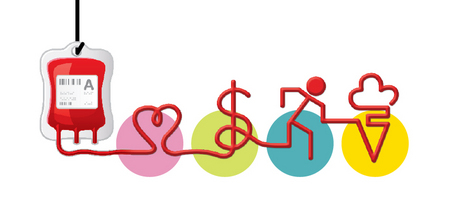
By Jennifer Boyer, Staff Writer, American Association of Blood Banks
Blood products and pop culture are an unlikely combination. Yet blood products have found their way into pop culture consciousness in recent years from celebrities publicly supporting blood-related causes to the vampire and zombie crazes. They are even impacting lifestyle choices such as diet, exercise and dating.
October 9, 2012 at 11:27 am
Published by Stanford Blood Center

By Tim Donald, Contributing Writer, American Association of Blood Banks
Roxanne and Mark decide to donate blood. While they are sitting together in an open waiting room, a nurse asks Roxanne questions about her sexual history and number of partners loud enough for all to hear. They are told their blood will be tested to see whether it is "clean" enough to be used. They spend a sitcom eternity waiting anxiously for the results to learn whether they have any sexually transmitted diseases, or STDs. In the end, someone from the clinic calls each partner to tell them that they do not have STDs. (Source: Whitney, Season 1, Episode 12, "Faking It")
October 2, 2012 at 11:33 am
Published by Stanford Blood Center
By Billie Rubin, Hemoglobin's Catabolic Cousin, reporting from the labs of Stanford Blood Center
The term "buffy coat" might make you think of a shiny car wax, but in the world of blood banking, buffy coat refers to the white layer between red blood cells and plasma in a unit of whole blood after it has been spun down in a centrifuge. The buffy coat contains white blood cells, the soldiers of the immune system.
September 25, 2012 at 9:24 am
Published by Stanford Blood Center

By Scott Johnson, president and founder of the Myelin Repair Foundation. Listen to Mr. Johnson speak live on this topic at our next Cafe Scientifique series on Thursday, September 27, 2012 at 7 p.m.
Just like millions around the world and perhaps many of you, I am a patient. I was diagnosed with multiple sclerosis over 30 years ago. At that time, I was told there would be a cure in 30 years. If I were diagnosed today, I would be told the same thing.
September 21, 2012 at 9:49 am
Published by Stanford Blood Center
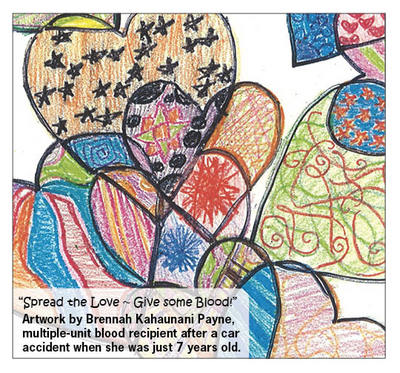
By Billie Rubin, Hemoglobin's Catabolic Cousin, reporting from the labs of Stanford Blood Center
It looks like our O+, O-, A+, and A- RBCs are going out to our hospitals at blinding speeds these days. When many of these blood types are at or near the critical levels in our inventory, everyone's work here at SBC is cut out for them. Finding and scheduling donors, setting up mobile blood drives, drawing the blood, testing it in the lab and processing it for transfusion has our little hands working as fast as they can go.

September 18, 2012 at 10:30 am
Published by Stanford Blood Center
I woke up one Tuesday and knew it was going to be a crappy day. I asked my daughter to get herself ready for school and wake me when it was time for me to drive her there. I e-mailed my personal trainer and cancelled my first appointment to launch a workout routine. Even showering felt like too much effort.
September 14, 2012 at 2:09 pm
Published by Stanford Blood Center
By Billie Rubin, Hemoglobin's Catabolic Cousin, reporting from the labs of Stanford Blood Center
Cytomegalovirus (CMV) is a virus that 50 - 85% of adults have been exposed to at some point in their lives. It is passed by person-to-person contact with body fluids, and it is in the same family of viruses that cause chicken pox and mononucleosis. In healthy people, it rarely results in serious illness and can remain dormant in their bodies for the rest of their lives.
September 10, 2012 at 1:55 pm
Published by Stanford Blood Center
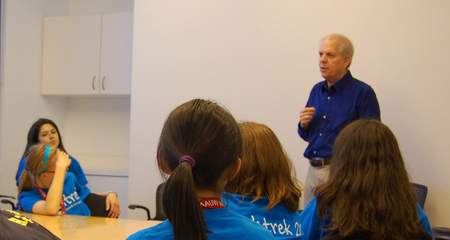
By Dayna Myers, Marketing Communications Manager, Stanford Blood Center
Stanford Blood Center founder and Medical Director Ed Engleman, MD, took a break from the lab to share his inspiring story with a group of students from the Tech Trek science and math camp on July 16.
September 5, 2012 at 4:19 pm
Published by Stanford Blood Center
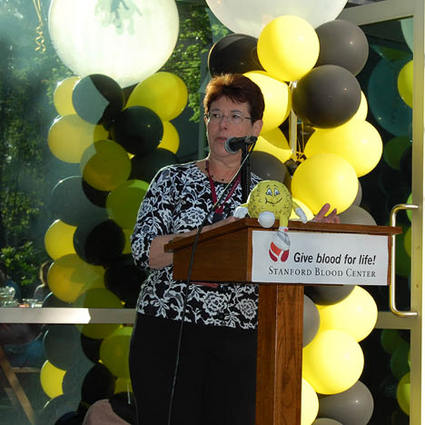
A message from Dr. Susan Galel, Director of Clinical Operations, Stanford Blood Center
If you are one of our dedicated platelet pheresis donors, you know that we keep careful records of how much you donate and how oftenin the familiar Annual Donor Records tucked in your chart. It is our responsibility to ensure that your donation frequency is safe for you. Before each of your donations, we tally all of your visits, red blood cell losses and plasma losses for the 12 months prior to that donation, to be sure that you will not exceed any of the safety limits.
August 31, 2012 at 8:44 am
Published by Stanford Blood Center
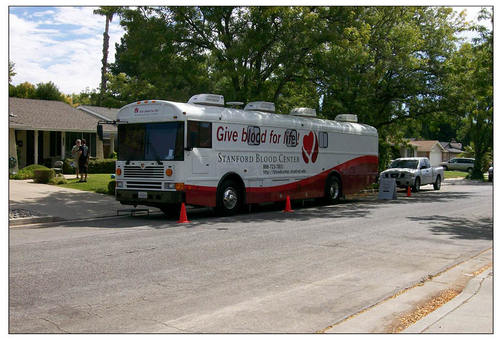
By Deanna Bolio, Public Relations Associate, Stanford Blood Center
Stanford Blood Center Bloodmobiles travel thousands of miles each year to collect donations at mobile blood drives. They stop at businesses and schools, churches and hospitals. But you might be surprised to know that on rare occasions you can even catch these buses on quiet residential streets, parked next to yard sale signs and driveway basketball hoops. These community blood drives, often associated with a particular patient or blood recipient, offer a unique opportunity for a community to come together for a good cause.








